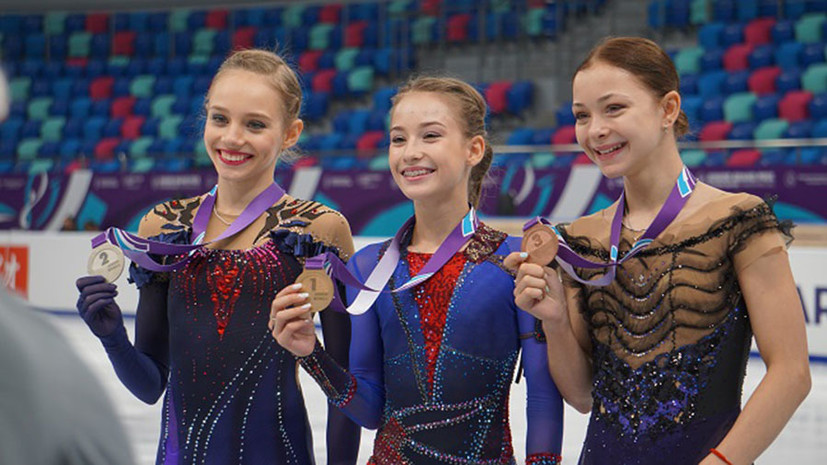The stage of the Junior Grand Prix in Krasnoyarsk became a logical continuation of the open adult skates in Chelyabinsk in the sense that it proved once again: if anyone is capable of surprising in the new season, it is Russian girls.
The three prize-winners of the girls' tournament first of all impressed with the quantity and quality of the quadruple jumps demonstrated on Saturday in the free program. The winner Sofia Akatieva had three of them (the athlete showed the same set that Kamila Valieva did not succeed in skating - salchow and two sheepskin coats), Sofia Samodelkina performed two salchows and a quadruple lutz, and Anastasia Zinina - two quadruple sheepskin coats.
Separately, it should be noted that in the short program, two skaters tried to demonstrate a cascade with a triple axel. For Akatieva, this combination turned out to be amazing, almost 15 points in total. Samodelkina's cascade did not come out, but the attempt at its execution itself clearly outlined the direction in which women's single skating (at least its Russian segment) will move in the very near future, as soon as the current generation of juniors reaches the adult level. And where in short programs, quadruple jumps and cascades with a triple axel, now forbidden in women's performance, will already be perceived in the order of things.
Will there be revolutionary changes after the Beijing Olympics?
Logic dictates yes.
But even if the post-Olympic ISU congress does not approve the long-overdue amendments, they will somehow be adopted a little later.
In any case, one should prepare for this new round of complexity now.
The junior rules, which allow skaters, in particular, to perform a triple axel in a cascade in short programs, generally look forward-looking in the sense that they give athletes the opportunity to try and work out this jumping ligament, unique for women's skating, in competitive conditions, without overloading her arbitrary.
After all, if a skater performs quadruple jumps in an arbitrary, inserting even a solo triple axel there becomes an extremely risky event. Only Valieva and Akatieva tried to perform these elements within the framework of one program this season, and the older Kamila has not yet managed to cope with all the desired jumps.
Akatieva's victory in Krasnoyarsk with an advantage of more than 25 points over her rivals gave rise to the question: how big is the chance that this particular girl will replace Valieva in the next Olympic cycle in Eteri Tutberidze's group? On the one hand, the question looks to a large extent abstract, as in relation to any other junior-level skater who has not reached puberty, but another thing becomes obvious: the Khrustalny school ceases to be the only center capable of supplying top-class singles to the ice market ...
Here, the wording should probably be changed: if until recently all the most promising skaters inevitably ended up in Khrustalny, leaving the former coaches in favor of more tempting prospects, now a number of other specialists are no less effective at the top-level of women's skating.
The current Junior Grand Prix confirms this once again: at the third stage in Kosice, the first two steps of the podium were taken by Evgeni Plushenko's wards - Veronika Zhilina and Sofia Muravyova, Samodelkina, who became the second in Krasnoyarsk, as well as Elizaveta Kulikova and Elizaveta Davitovskaia, was prepared by Sergei Berestovskaya.
Moreover, the outstanding quadruple lutz by Samodelkina, like the quadruple rittberger shown in Krasnoyarsk in training, made no less furor than the five quadruples of Alexandra Trusova in Chelyabinsk.
Well, in general, we can already say that the final of the Junior Grand Prix may well pass without foreign skaters at all. It's a paradox, but this fact can turn out to be dangerous for Russia. After all, if this really happens, ISU will be just right to take all possible measures so as not to introduce quadruple jumps into the mandatory set for as long as possible.

